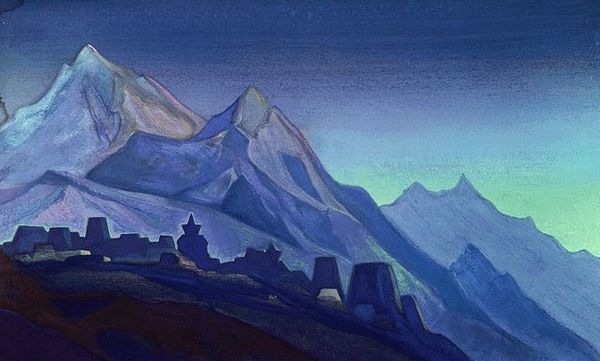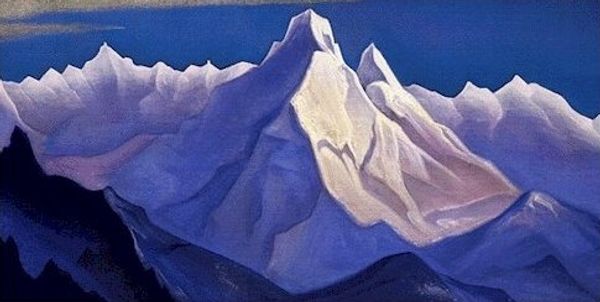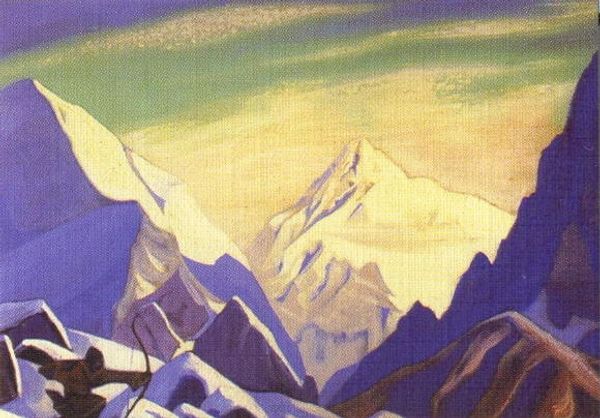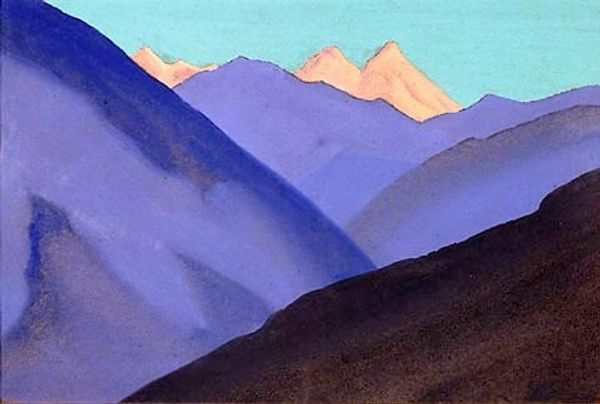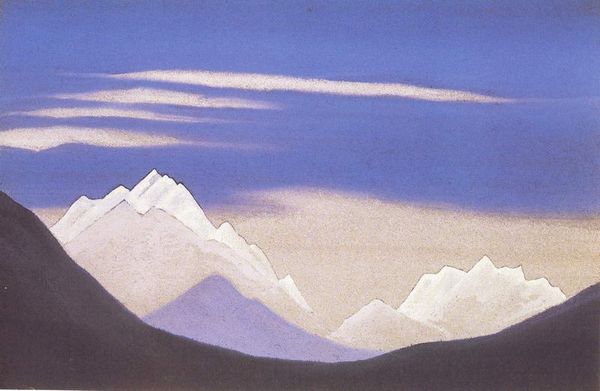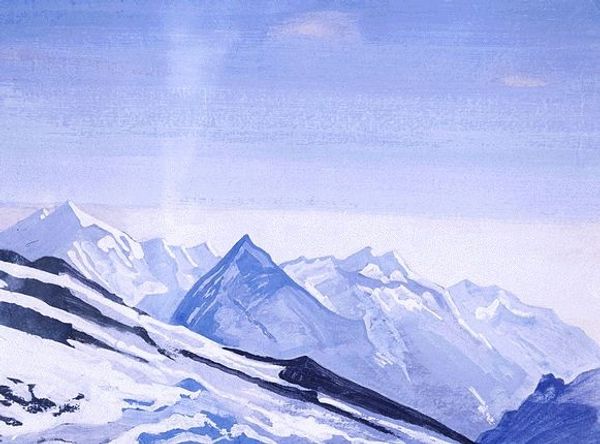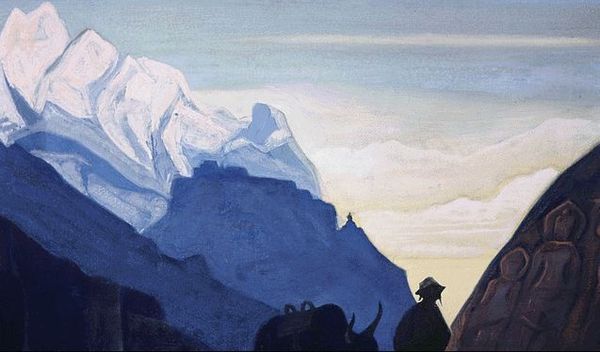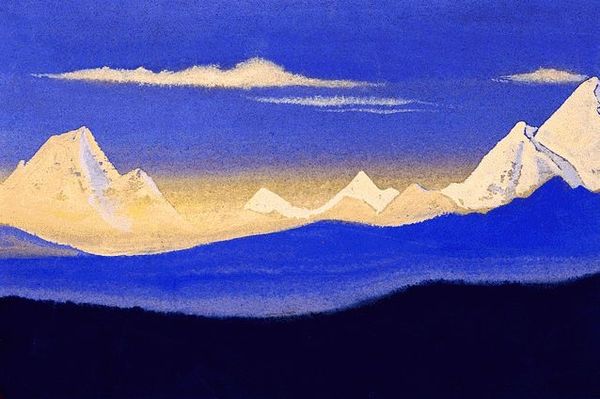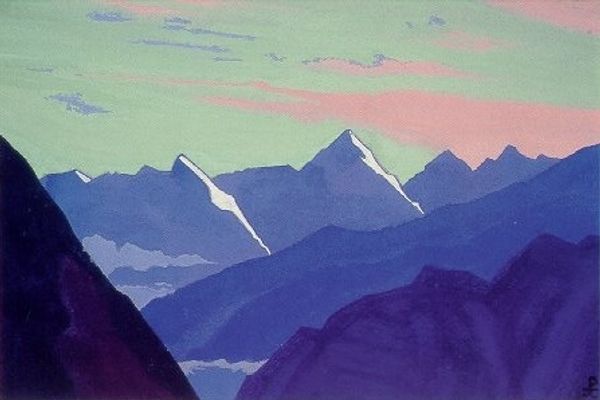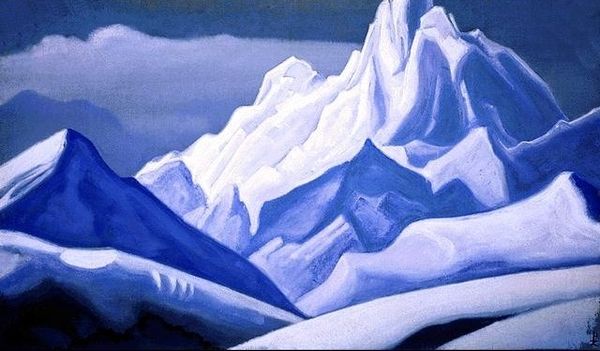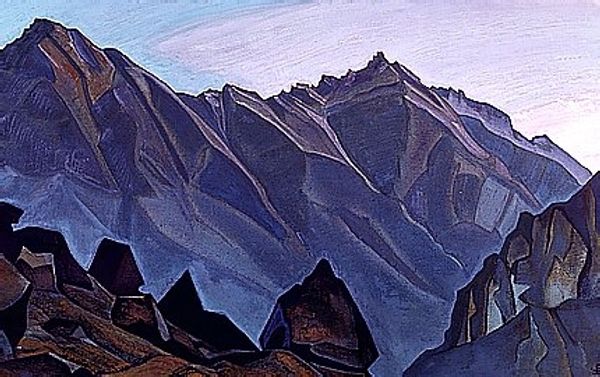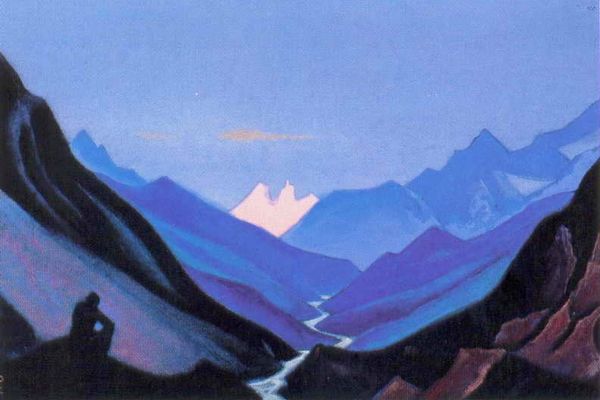
Copyright: Public domain
Curator: Well, here we have "Himalayas. Blue Mountains," painted in 1939 by Nicholas Roerich. It’s a tempera painting, mostly cool blues with snow-capped peaks. What strikes you about it initially? Editor: It feels both incredibly serene and imposing. All that blue creates such a calm atmosphere, but the sharp, geometric shapes of the mountains feel…powerful, almost forbidding. A real balancing act, visually. Curator: Indeed. Roerich had a profound spiritual connection with the Himalayas; he saw them as these earthly connections to higher planes. Notice how he’s used this incredible range of blues and whites. The mountains, with their cool luminosity, they’re almost ethereal. Editor: I can see that. Blue is such a loaded color, right? Loyalty, melancholy, wisdom. Layering those blues like this makes the whole landscape vibrate with meaning, and yet, it remains still, timeless. The almost total lack of warm tones contributes a bit, it is very dreamlike in this way. What about the small buildings nestled amongst those peaks, those architectural elements add something else to the mix. Curator: Roerich often included these details; hints of human presence to act as visual anchors that contrast the imposing sublime landscape. It highlights the harmony between humanity and nature, even in these remote locales, acting as signifiers for spiritual pilgrimage. Symbolically, it represents striving towards enlightenment and reaching a higher plane of awareness, of which those cool tones contribute to. Editor: That's interesting; I suppose they remind me of isolation just as much as harmony, in a place seemingly unreachable from the rest of the world. The painting does capture this kind of introspective journey, though, through the deliberate symbolic choice of its key figures. What can you tell us about those elements? Curator: Roerich drew heavily from the symbolic vocabulary of Buddhism and Theosophy, those peaks symbolize obstacles on the path to enlightenment, and their luminescence represent hope. It mirrors how achieving such wisdom is a process of illuminating that which we cannot see. I always feel some element of hope when looking at this work. Editor: It's a deeply resonant image, really. It invites a prolonged engagement. Looking at it from different perspectives really shifts your appreciation of the work as a whole. I will leave here thinking more deeply about this piece for a long while. Curator: Yes, me too. Hopefully, it resonates just as powerfully with our listeners, encouraging reflection.
Comments
No comments
Be the first to comment and join the conversation on the ultimate creative platform.
